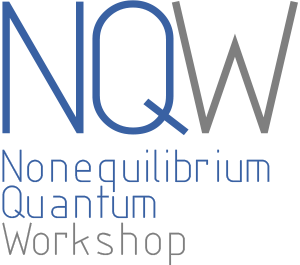
- This event has passed.
Coherent Modulation of Quasiparticle Scattering Rates in a Photoexcited Charge-Density-Wave System
December 12, 2021 @ 17:45 - 18:10 CET
J. Maklar,1 M. Schüler,2 Y. W. Windsor,1 C. W. Nicholson,1 M. Puppin,1 P. Walmsley,2, 3 I. R. Fisher,2, 3 M. Wolf,1 R. Ernstorfer,1, 4 M. A. Sentef,5 L. Rettig1
1Fritz-Haber-Institut der Max-Planck-Gesellschaft, Faradayweg 4-6, 14195 Berlin, Germany
2Stanford Institute for Materials and Energy Sciences, SLAC National Accelerator Laboratory, 2575 Sand Hill Road, Menlo Park, CA 94025, USA
3Geballe Laboratory for Advanced Materials and Department of Applied Physics, Stanford University, Stanford, CA 94305, USA
4Institut für Optik und Atomare Physik, Technische Universität Berlin, Straße des 17. Juni 135, 10623 Berlin, Germany
5Max Planck Institute for the Structure and Dynamics of Matter, Luruper Chaussee 149, 22761 Hamburg, Germany
Fundamental quasiparticle interactions in solids such as electron-electron and electron-phonon scattering are of fundamental importance e.g. for electronic and optical material properties. While for simple systems such as quasi-free electron gases, fairly good descriptions have been reached, for more complex solids, it remains highly challenging to unravel their intricate interplay, and to identify the dominant channels. Additional challenges arise from broken-symmetry ground states emerging due to strong correlations in complex quantum materials. A way to tackle this problem is by tracking a material’s dynamical response after ultrafast optical excitation, as this approach yields direct insight into energy dissipation and scattering processes on their intrinsic timescales. In addition, tailored photoexcitation also provides a way to dynamically control specific material properties, and thereby modify the material’s intrinsic interaction channels.
Here, we combine these two approaches, by tracking the fundamental quasiparticle interactions during a photoinduced insulator-to-metal phase transition in a charge-density-wave (CDW) material. Using time- and angle-resolved photoemission spectroscopy (trARPES), we study the transient electronic structure of the prototypical CDW compound TbTe3. By employing strong optical excitation, we suppress the CDW energy gap at the Fermi level, thereby driving the system into a transient metallic state, followed by a coherent evolution of the system within the transient CDW potential [1]. Simultaneously, we track the relaxation of highly excited, hot quasiparticles, and find a highly unusual modulation of their relaxation rate. State-of-the-art calculations based on non-equilibrium Green’s functions provide a microscopic view onto the interplay of quasiparticle scattering and the (transiently modified) electronic band structure, which allow us to quantify the modification of particle-hole scattering processes due to the influence of the CDW energy gap [2].
- J. Maklar, et al., Nat. Commun. 12, 2499 (2021)
- J. Maklar, et al., arXiv:2108.12323 (2021)


